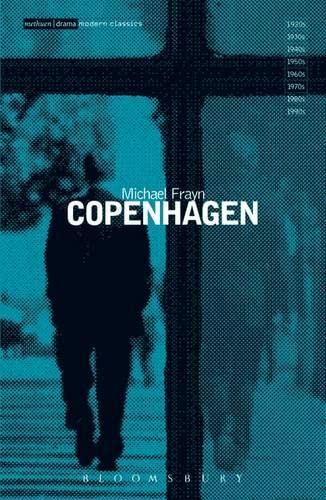

To Margrethe, Heisenberg was always an untrustworthy student, eager to steal from her husband's knowledge. What they discussed on that walk, and its implications for both scientists, have long been a mystery, even though both scientists gave (conflicting) accounts in later years.įrayn's cunning conceit is to use the scientific underpinnings of atomic physics, from Schrödinger's famous cat to the Heisenberg uncertainty principle, to explore how an individual's point of view renders attempts to discover the ultimate truth of any human interaction fundamentally impossible. After a brief discussion in the Bohrs' home, the two men went for a short walk. In 1941, the German scientist visited Bohr, his old mentor and long-time friend, in Copenhagen. The play's other two characters, the Danish physicist Niels Bohr and his wife, Margrethe, are involved with Heisenberg in an after-death analysis of an actual meeting that has long puzzled historians. But in his Tony Award-winning play Copenhagen, Michael Frayn shows us that these men were passionate, philosophical, and all too human, even though one of the three historical figures in his drama, Werner Heisenberg, was the head of the Nazis' effort to develop a nuclear weapon. The popular image of the men who made the bomb is of dispassionate intellects who number-crunched their way towards a weapon whose devastating power they could not even imagine. In Michael Frayn's ambitious, fiercely intelligent, and daring new play Heisenberg and Bohr meet once again to discuss the intricacies of physics and to ponder the metaphysical-the very essence of human motivation.For most people, the principles of nuclear physics are not only incomprehensible but inhuman. Why Heisenberg went to Copenhagen and what he wanted to say to Bohr are questions that have vexed historians ever since. But now the world had changed and the two men were on opposite sides in a world war.

Their work together on quantum mechanics and the uncertainty principle had revolutionized atomic physics. In 1941 the German physicist Werner Heisenberg made a clandestine trip to Copenhagen to see his Danish counterpart and friend Niels Bohr. Item #264515 ISBN: 0385720793 The Tony Award-winning play that soars at the intersection of science and art, Copenhagen is an explosive re-imagining of the mysterious wartime meeting between two Nobel laureates to discuss the atomic bomb.


 0 kommentar(er)
0 kommentar(er)
